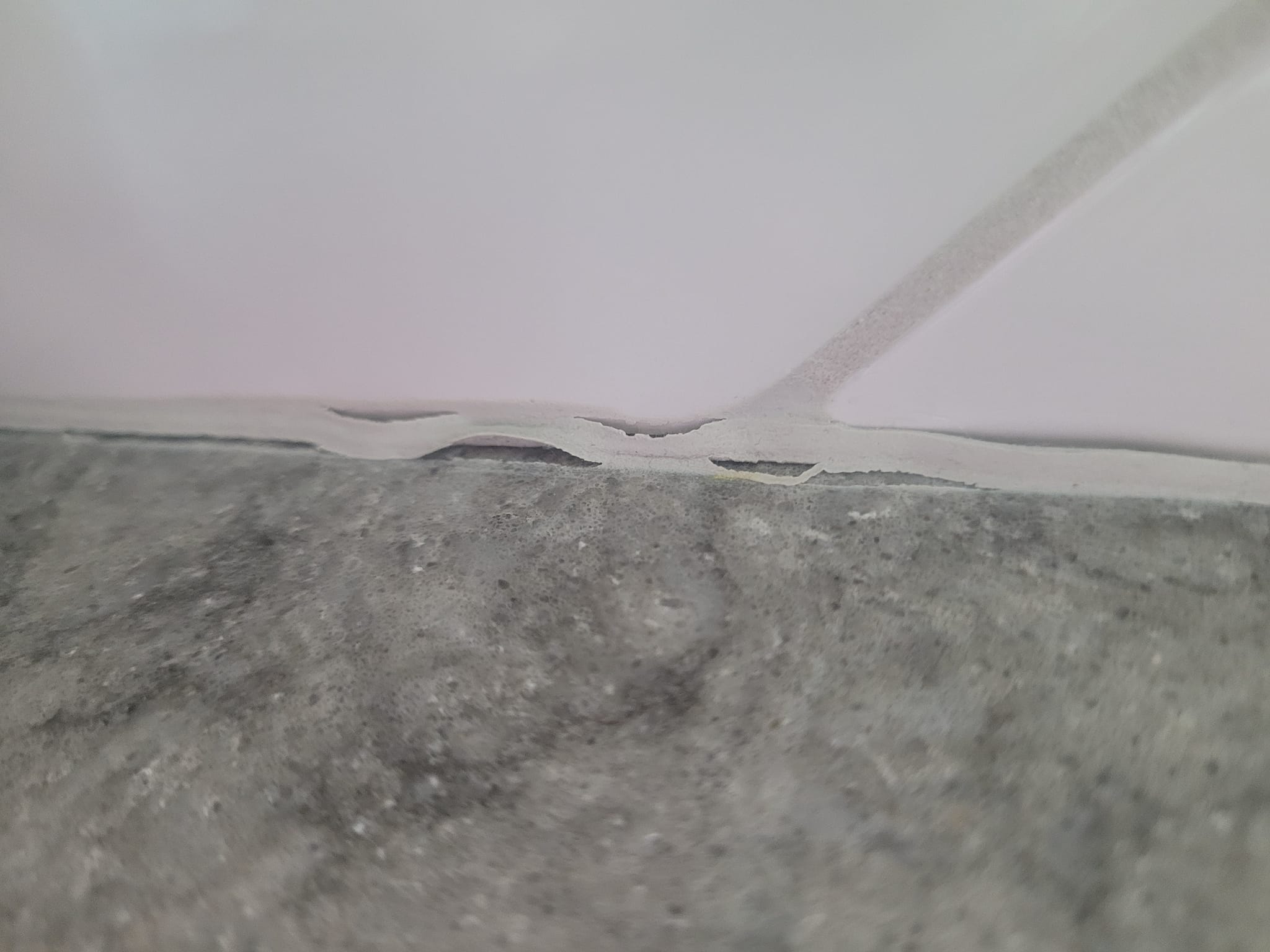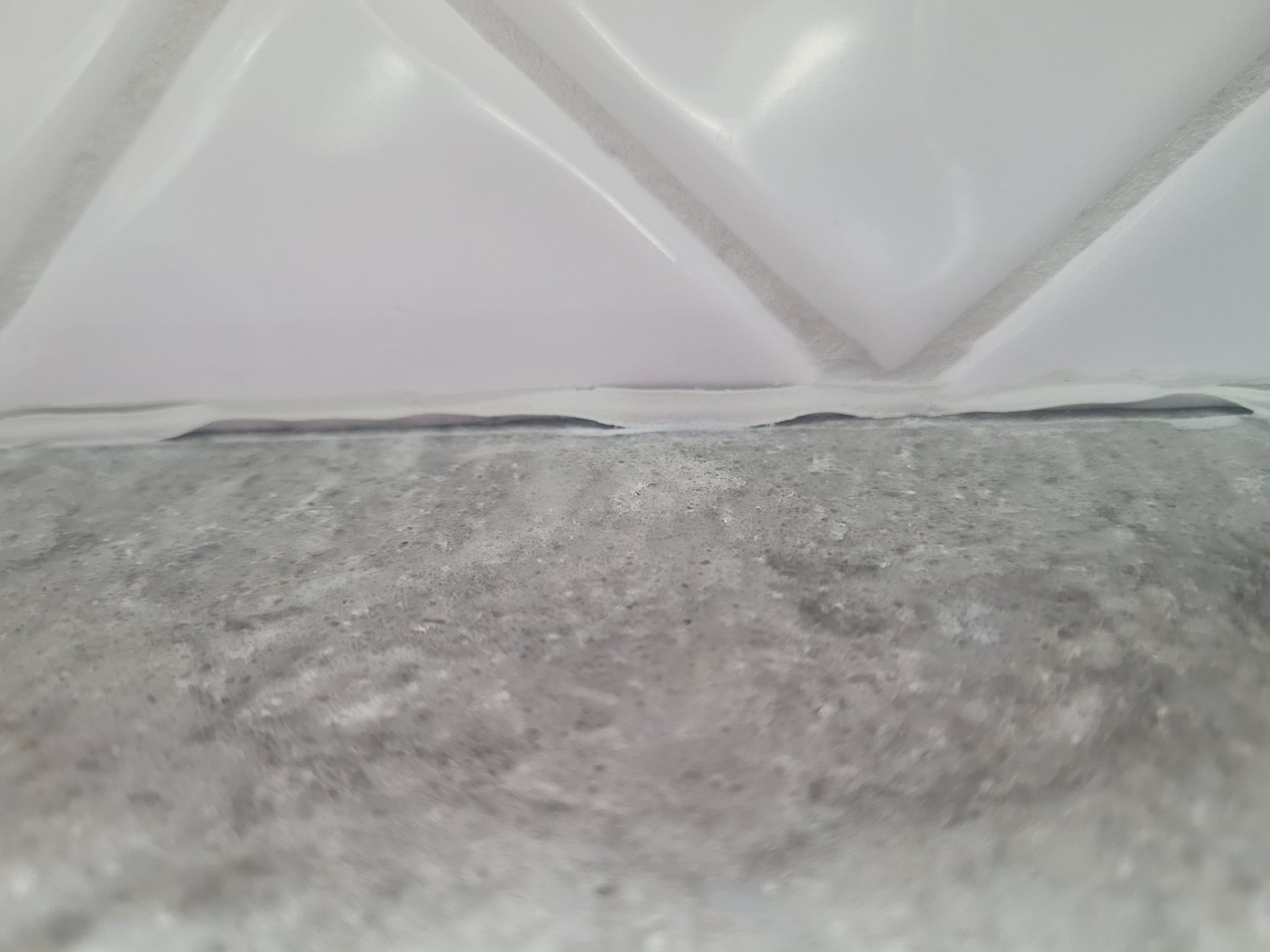How can I prevent the backsplash from repeatedly splitting open at the sink due to winter humidity changes, despite my husband redoing it twice?
1 year ago
Last Updated: May 4, 2024
Hey, do you have any suggestions on how to fix the spot in my kitchen where the backsplash meets the quartz countertop? My husband has tried fixing it twice already, but it keeps splitting open, especially during the winter when the humidity changes. It’s only happening behind the sink, which is against an exterior wall. The rest of the kitchen doesn’t have this issue.


Grout caulk that matches the color.
The color seems similar to DeLorean grey.
Grout tends to develop cracks over time, consider using silicone or grout caulking that matches the color
Remove the damaged section, make sure to clean it thoroughly. Next, apply caulk deep into the crevice and add another layer on top simultaneously. (Make sure the first layer doesn’t dry before adding the second layer) Secure it well in the crevice
You should invest in a higher quality caulk. The cheaper options tend to shrink significantly.
If you prefer to just re-caulk it: 1. Purchase a pint or so of Contractor’s DE Solv from Amazon, Ace Hardware, or possibly an auto parts store. Follow the instructions to remove the old caulk. 2. Clean the area with denatured alcohol a few times. 3. Make sure it’s clean and completely dry. 4. Apply the new caulk. Another option is to remove the old caulk and re-grout it. The De Solv helps to loosen the caulking for easy removal. Allow it to work for 10 to 15 minutes.
This is the kitchen I renovated back in 2012. I filled the 1/4″ gap with sanded grout and then, after letting it cure for about 2 weeks, I sealed it with clear 100% silicone.
Using sanded grout on glass and metal can be quite a bold move when grouting the counter joint.
Hey Cole, I totally agree with you! It’s like a small miracle, right? The whole counter setup seems pretty impressive to me. I’d never attempt this on a job though. Joints are usually smaller and just silicone.
Is this regular grout? The joint between the countertop and backsplash should be sealed with silicone grout instead of regular grout.
– I checked with my husband and he couldn’t remember what he used last time, it’s been a while. It feels like grout when you touch it, not like silicone.
– It’s a mix of silicone and grout so it should have a similar texture. If you pick off a loose piece and try stretching it, if it doesn’t stretch at all then it’s regular grout. The one with silicone will stretch a bit.
– Is that why mine is falling apart?
Confirms the need for siliconized grout in the crumbling area.
Expresses gratitude for the helpful comment about using siliconized grout between the tub and tile joint.
Recommends using straight silicone between the tub and tile because the siliconized grout absorbs water and the tub joint gets more water compared to a counter.
I would consider getting a thin piece of quartz cut, maybe around 3/4 in size, and use that as a trim piece. Wood tends to swell and shift a bit, especially when it’s exposed to humidity, and caulk tends to shrink as it dries over time.
Remove that piece and replace it with 100% silicone.
Remove any loose pieces first. After applying the bead repair, use your wet finger to smooth it out nicely.
When recaulking, opt for the highest quality silicone available. It may be a bit more expensive, but the results will speak for themselves.
But it’s nearly $15!
Try using AMP, a polymer from the DAP brand. You should be able to find it at Home Depot. It’s durable. The only downside is that it requires a week to fully set, so make sure to keep food crumbs away until it’s dry.
I think the exterior wall is probably getting impacted by the frost each winter, causing it to shift slightly. Just enough to loosen that seam. Maybe use a good sealant when the gap is at its widest.
Take it all off. Clean the area thoroughly. Wipe with alcohol to get rid of any residue. Allow it to dry. Apply silicone (not acrylic caulk).
I’d suggest completely getting rid of that and using white Lexel sealant instead. That stuff works wonders.
Invest in a Mapei colored grout caulk, even though it may be double or triple the price (around 15-20$). It’s a long-lasting solution that is definitely worth the investment.
It’s not just about humidity, it’s also about thermal expansion due to the seasonal changes and the use of different materials. Try using a piece of PVC “L” trim and secure it to the wall to allow the countertop to move back and forth while keeping the gap covered.
This is silicone, not caulk.
Have you considered using silicone caulk for sealing?
Even better, go for siliconized grout caulk.
There are some great suggestions here! Another idea is to use joint compound to feather the wall where it meets the countertop. Just a heads up, it could be tricky if you haven’t done it before.
You know, the cleanest and best appearance would actually be achieved without any caulk at all. Just something to consider! 
After you remove the old caulk, be sure to use a super stretch caulk on the surface.
JUST AND ONLY: After you take out the old caulk, use a super stretch caulk on the surface.